
A typical streetscape of a typical prosperous middle-class streetcar suburb in the Pittsburgh area.

A typical streetscape of a typical prosperous middle-class streetcar suburb in the Pittsburgh area.
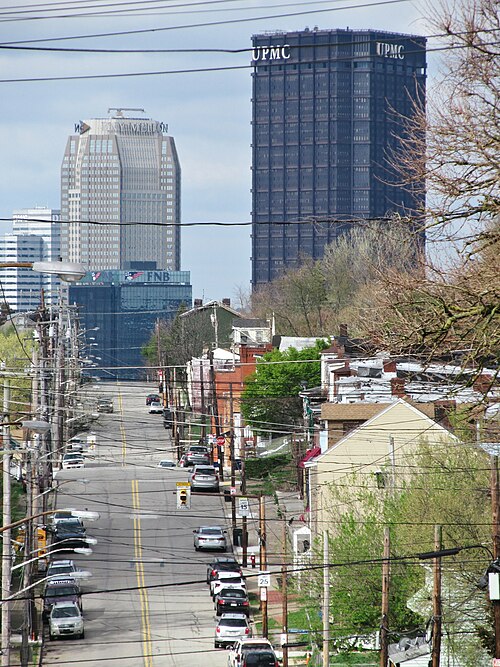
Another long view for utility-cable collectors.
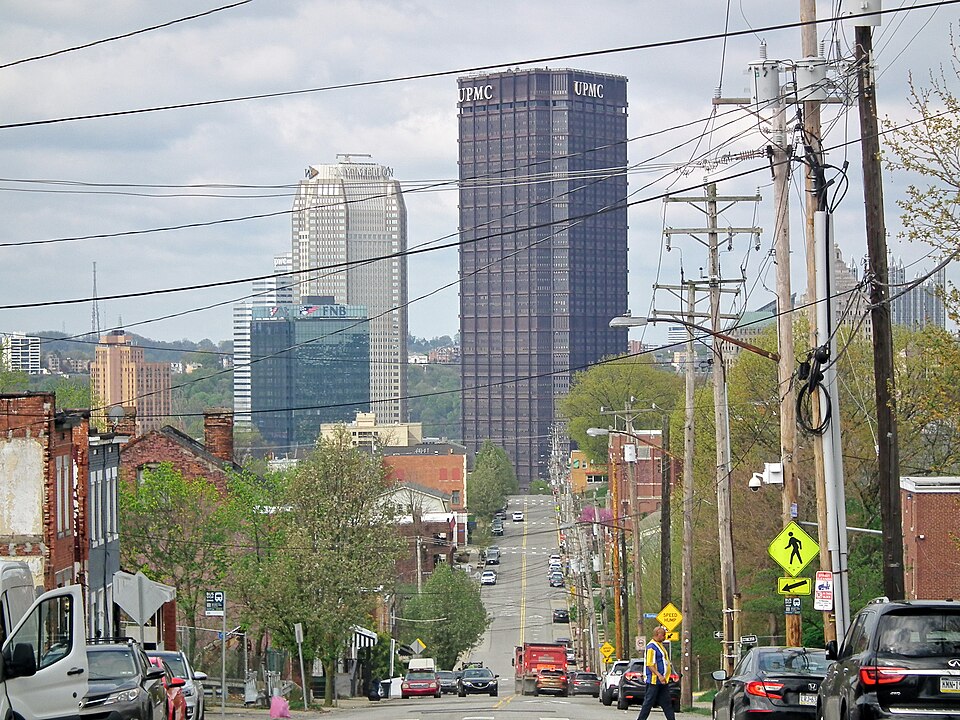
A view westward on Bedford Avenue that should please connoisseurs of utility cables.
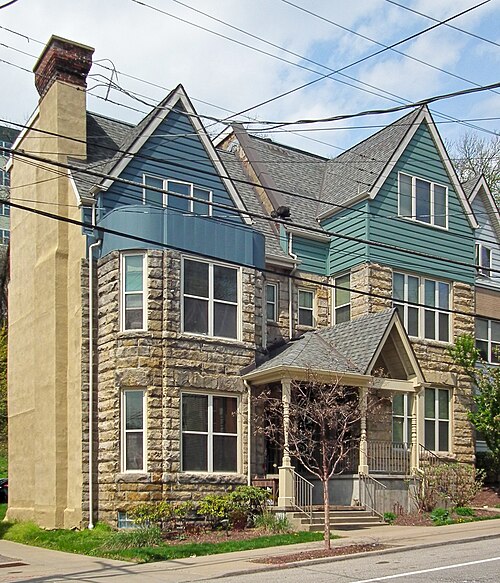
In 1889, William Smith Fraser, one of our top architects in those days, supervised a whole long block of fifty elegant stone-fronted houses lining both sides of Dinwiddie Street.1
A majority of the houses disappeared over the years; the street came to look like a battle zone, three-quarters abandoned.
But the wheel turned again. About fifteen years ago, Rothschild Doyno Collaborative designed infill housing and refurbished the Fraser houses. The new houses were built at the same scale and setback as the old, and with some of the same massing; the old houses were refurbished with inexpensive materials that matched the new houses.
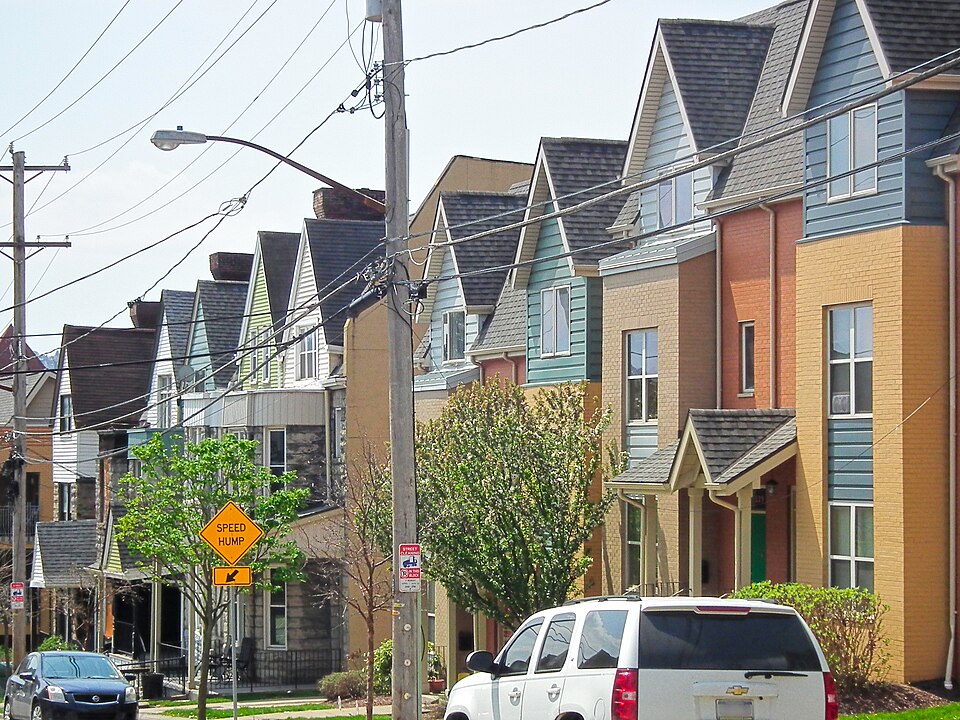
It’s still not a rich neighborhood. But it’s a beautiful and welcoming streetscape again, and it’s an inspiring example of how an interrupted streetscape can be made whole. The new houses are definitely of our century, but they belong on the street. Without duplicating the Fraser designs, they make themselves at home in the neighborhood.
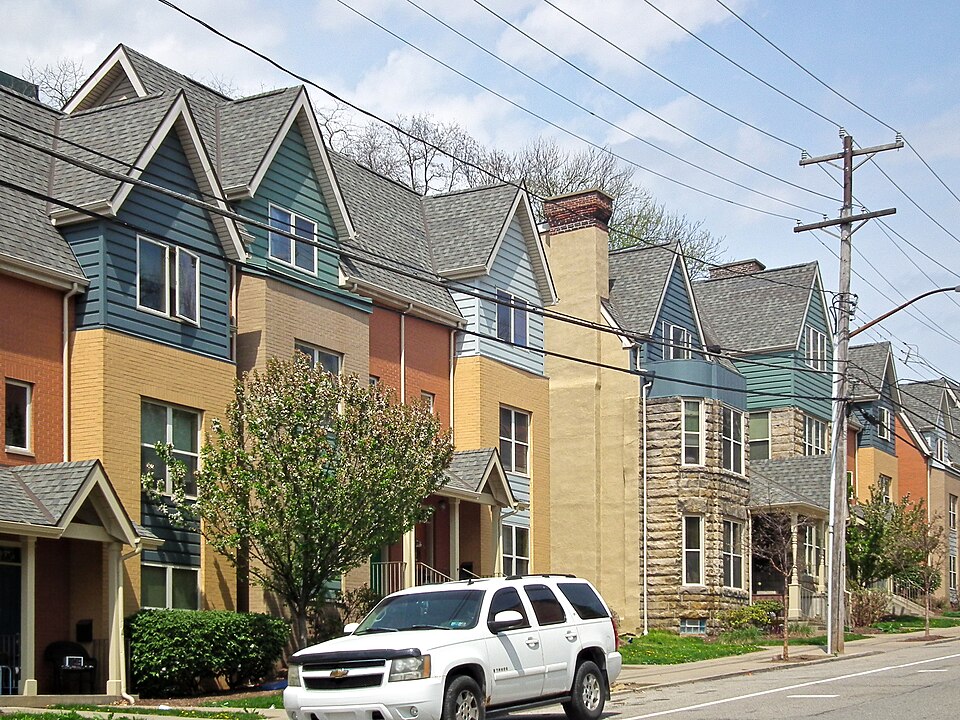
In this picture, the houses with stone bays in front are some of the original Fraser houses. Their more colorful neighbors are the “infill” houses.
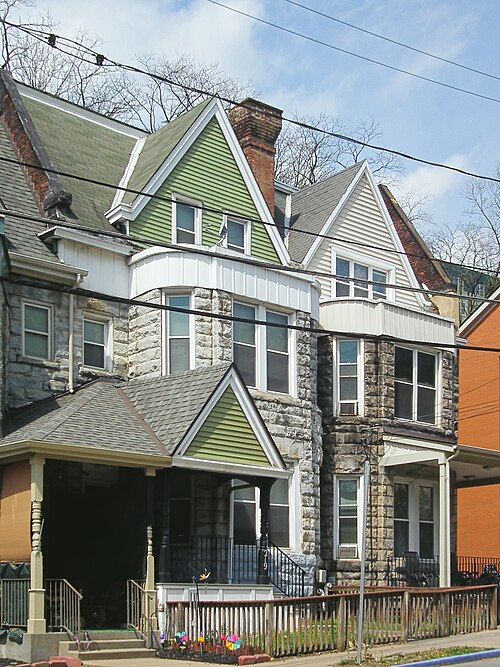
A pair of the original Fraser houses.
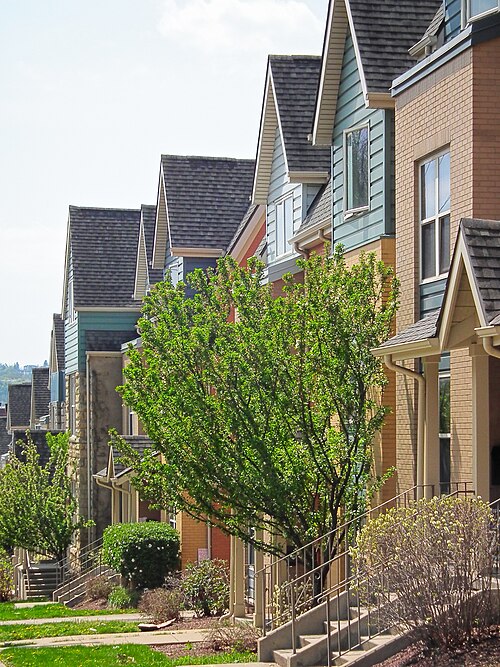

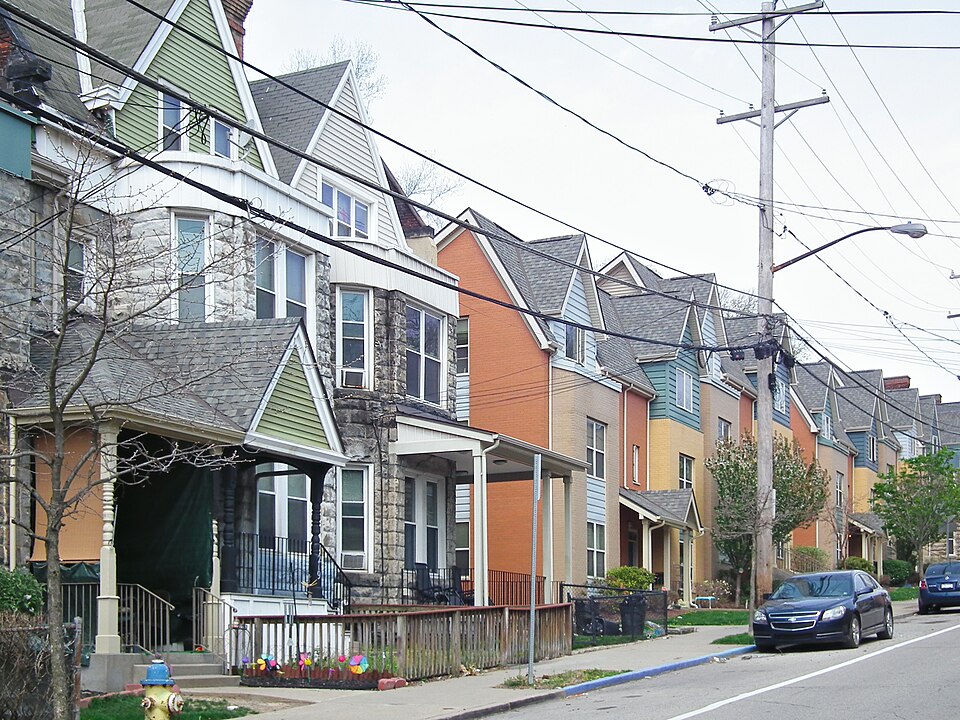

Exchange Way is an ancient alley that has served the backs of buildings on Liberty Avenue and Penn Avenue for two centuries or more. It has never been completely continuous, and a two-block interruption caused the name of the stub of the alley that branched off Cecil Way to be forgotten, so that it was renamed Charette Way when the Pittsburgh Architectural Club opened a clubhouse with its entrance on the alley. But originally that alley was part of Exchange Way, too.
A good alley is a symphony of textures, and some of Father Pitt’s favorite pictures are black-and-white photographs of alleys.


Looking eastward up the whole length of Third Avenue from Stanwix Street.

A typical backstreet Bloomfield row of frame houses, showing almost every treatment working-class Pittsburghers can think of to apply to the exterior of an old house.

The west side of the Diamond or Market Square, seen from Graeme Street.

Like many other streets that appear on the maps of hilly neighborhoods, Milo Street is entirely stairs. Whenever you see a street sign that seems to be pointing off the edge of a cliff, a stairway like this is usually the explanation.

